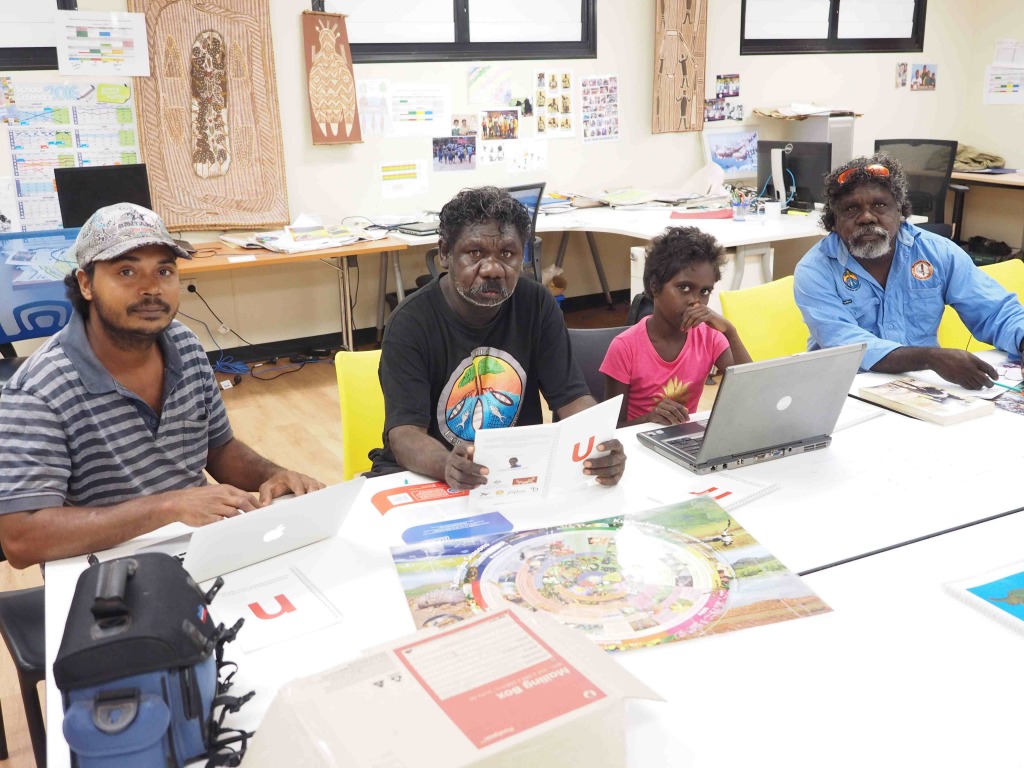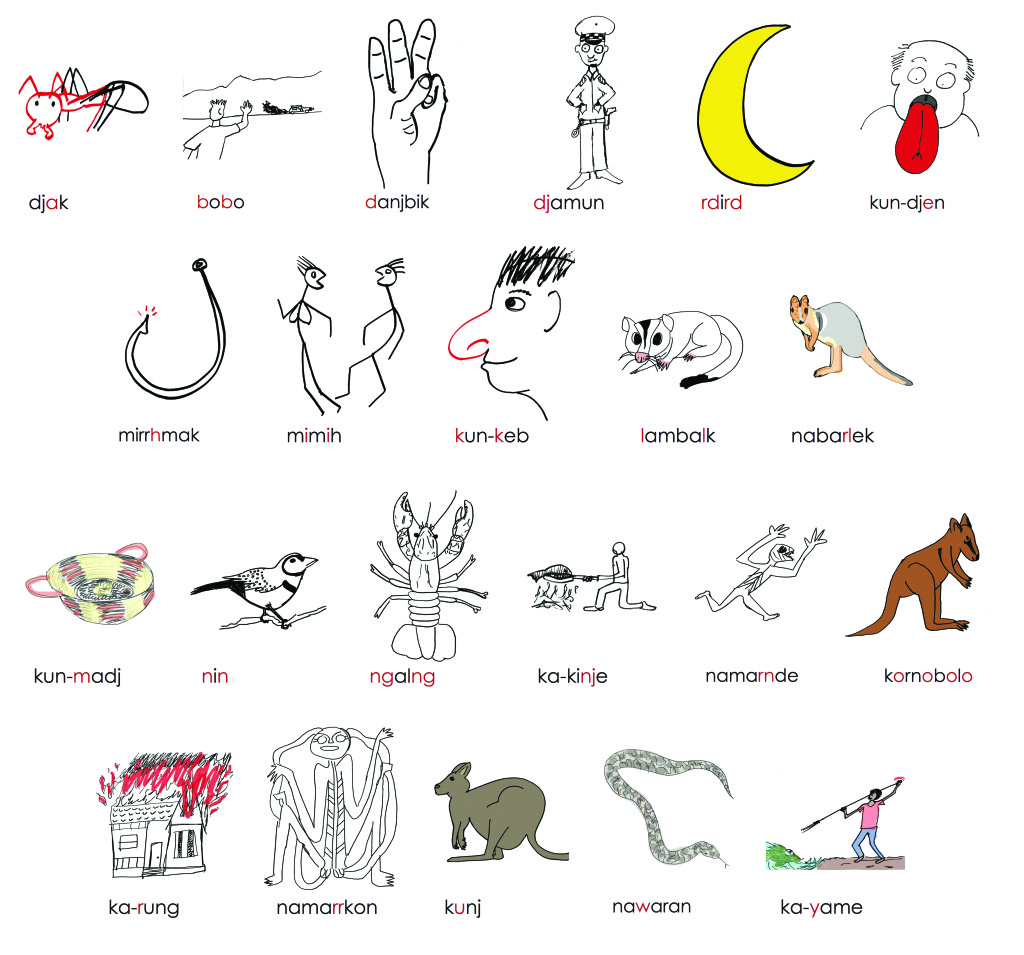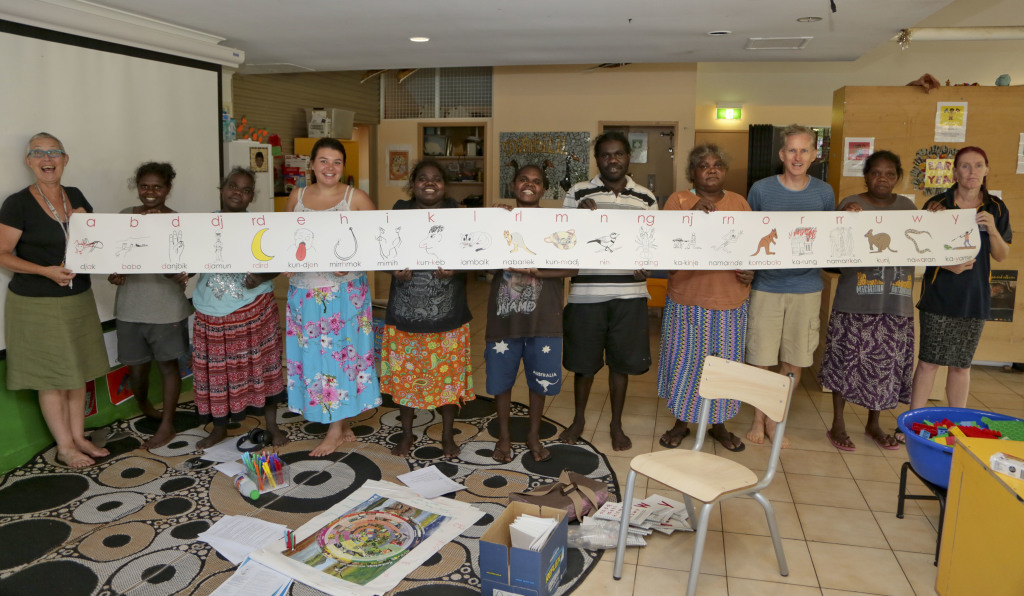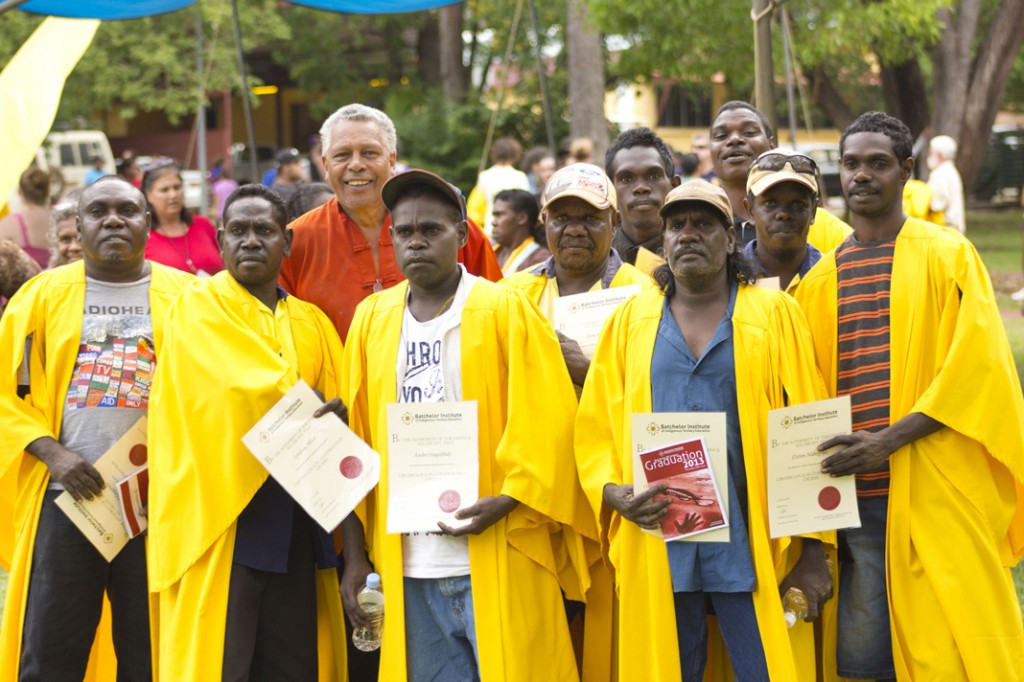Kamalay Kamak = 'Good Morning'. Ngaye Bulanj Linton. Ngarrurrkmirri Manawukan School kunwok Kuninjku. Nganedjarrkdurrkmirri Bangardi Nadukurrdji dja Kamarrang Naborn.
Translation:
Good morning. I am Bulanj Linton (left). I work at Maningrida School teaching Kuninjku language . I work with Bangardi (from Dukurrdji clan, centre) and Kamarrang (from Born clan, right).
Bonj
That is all.





